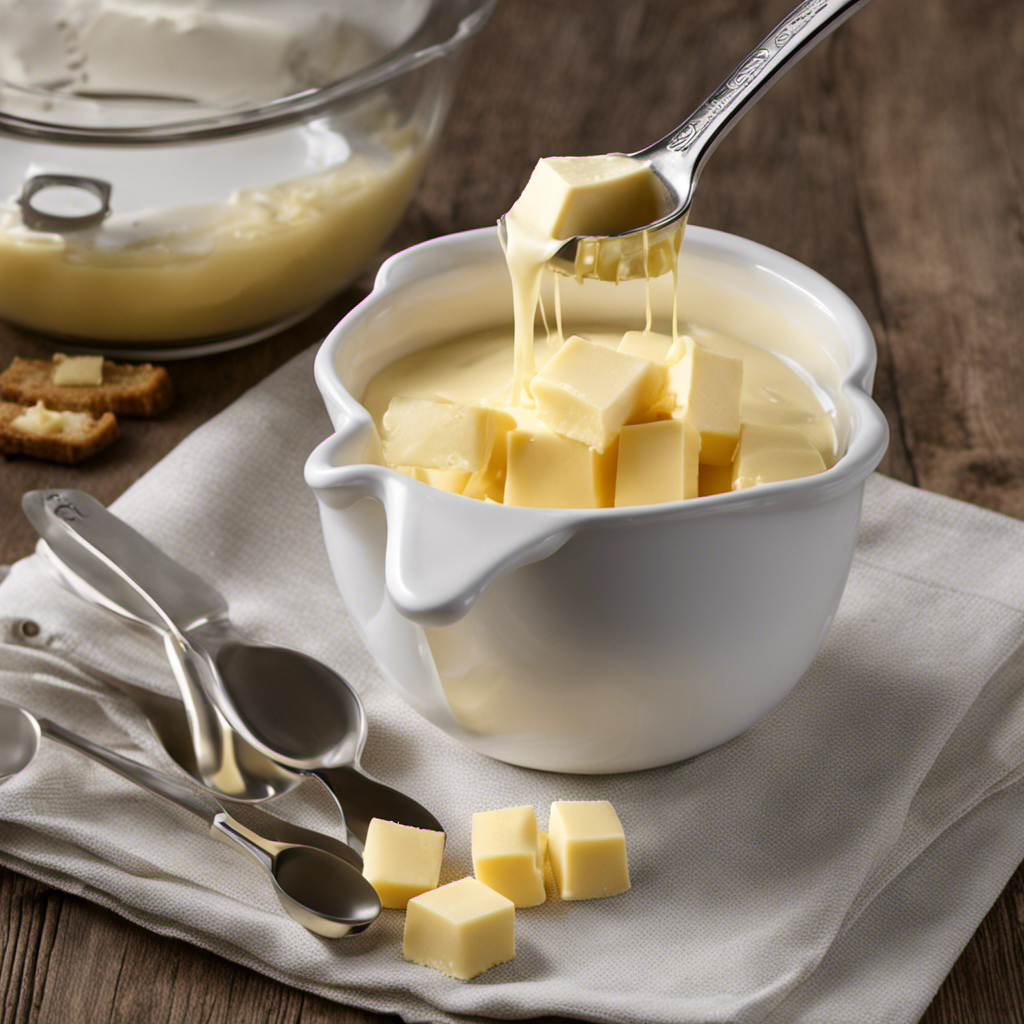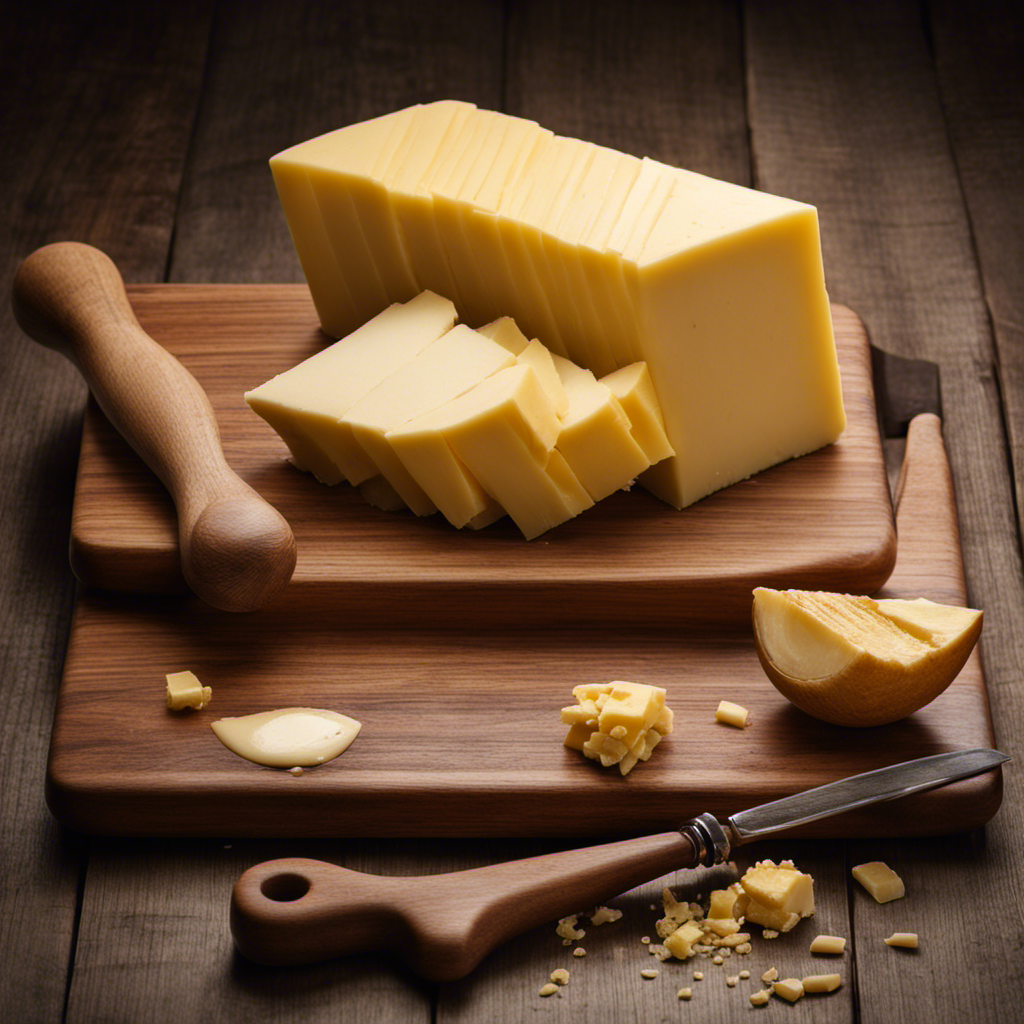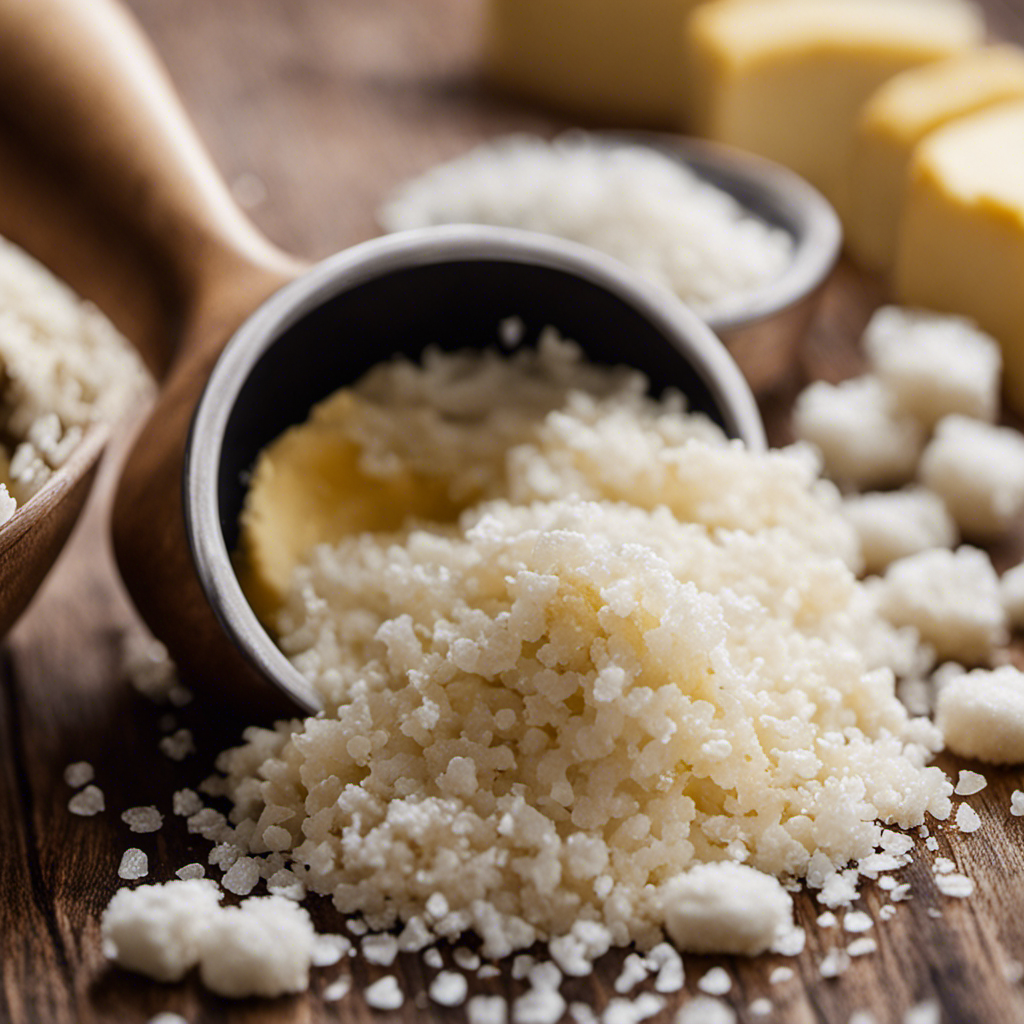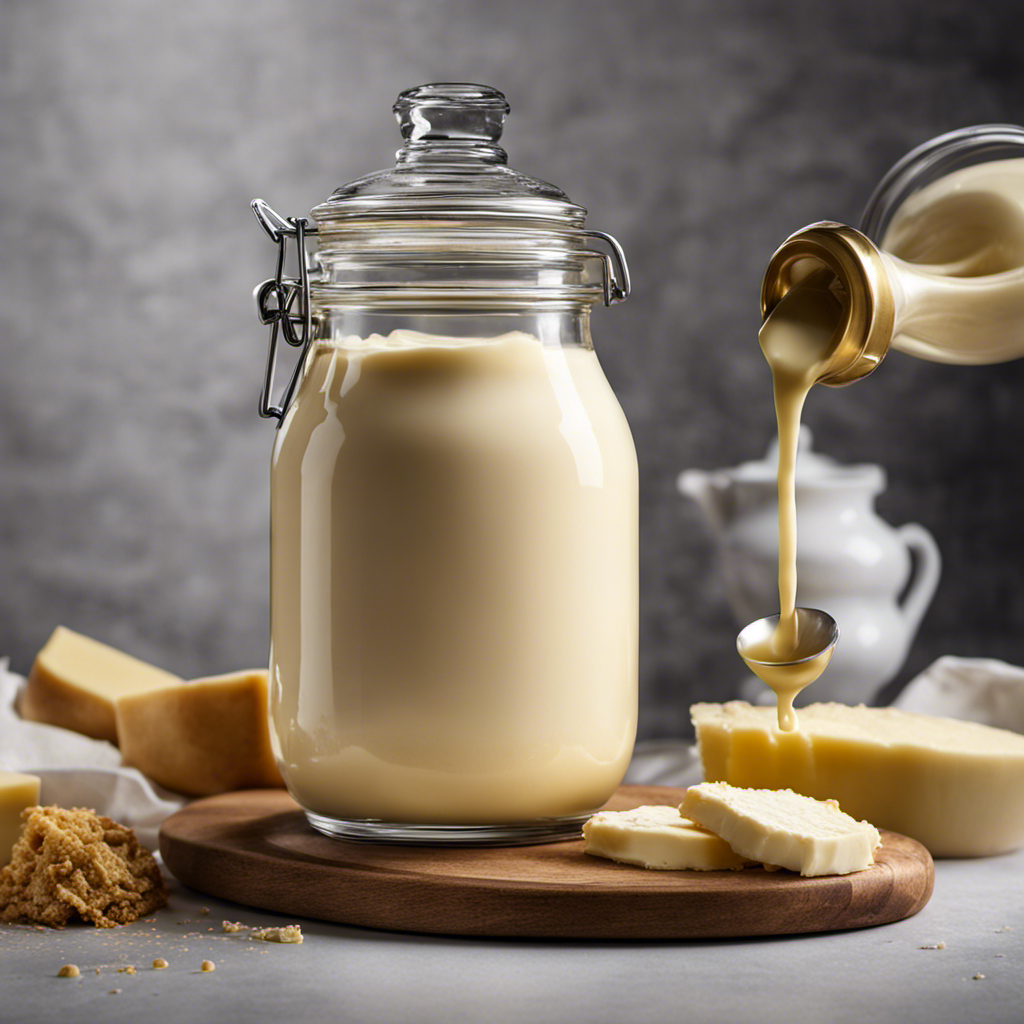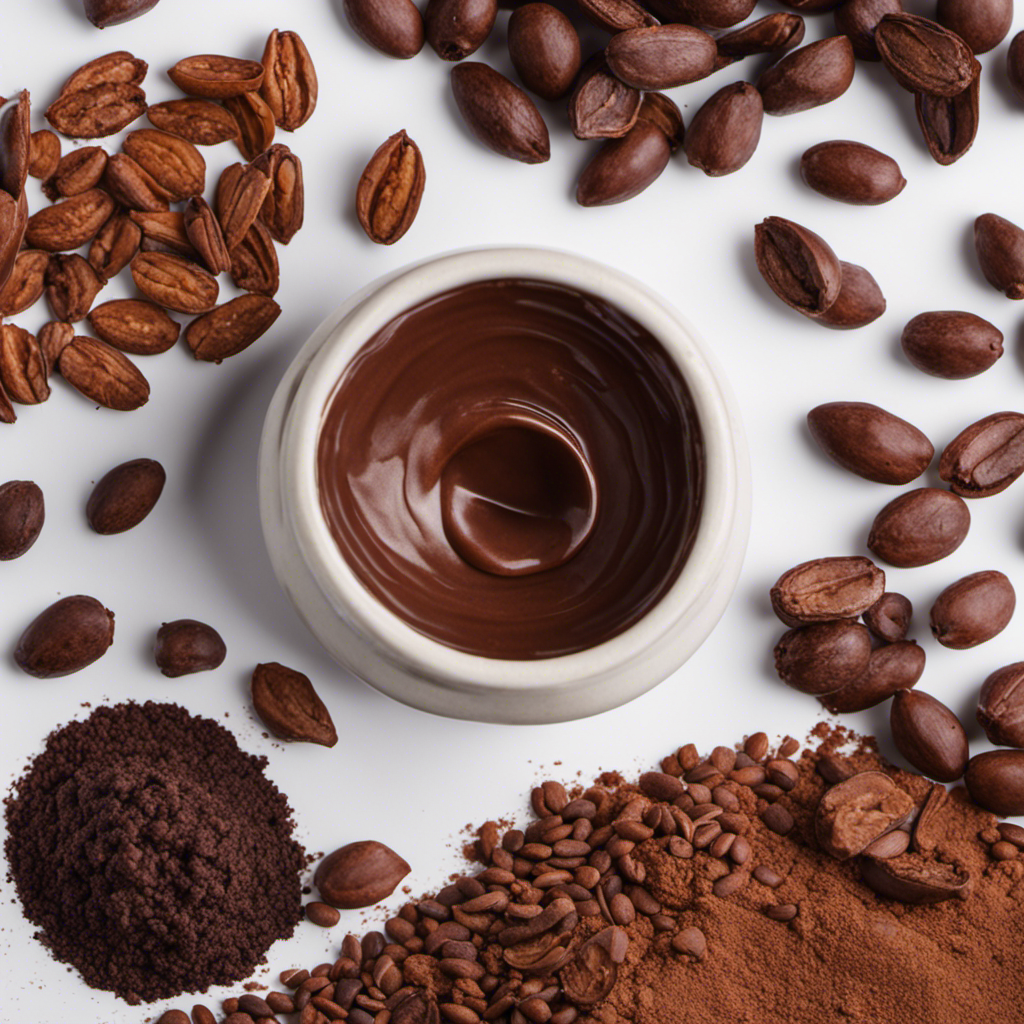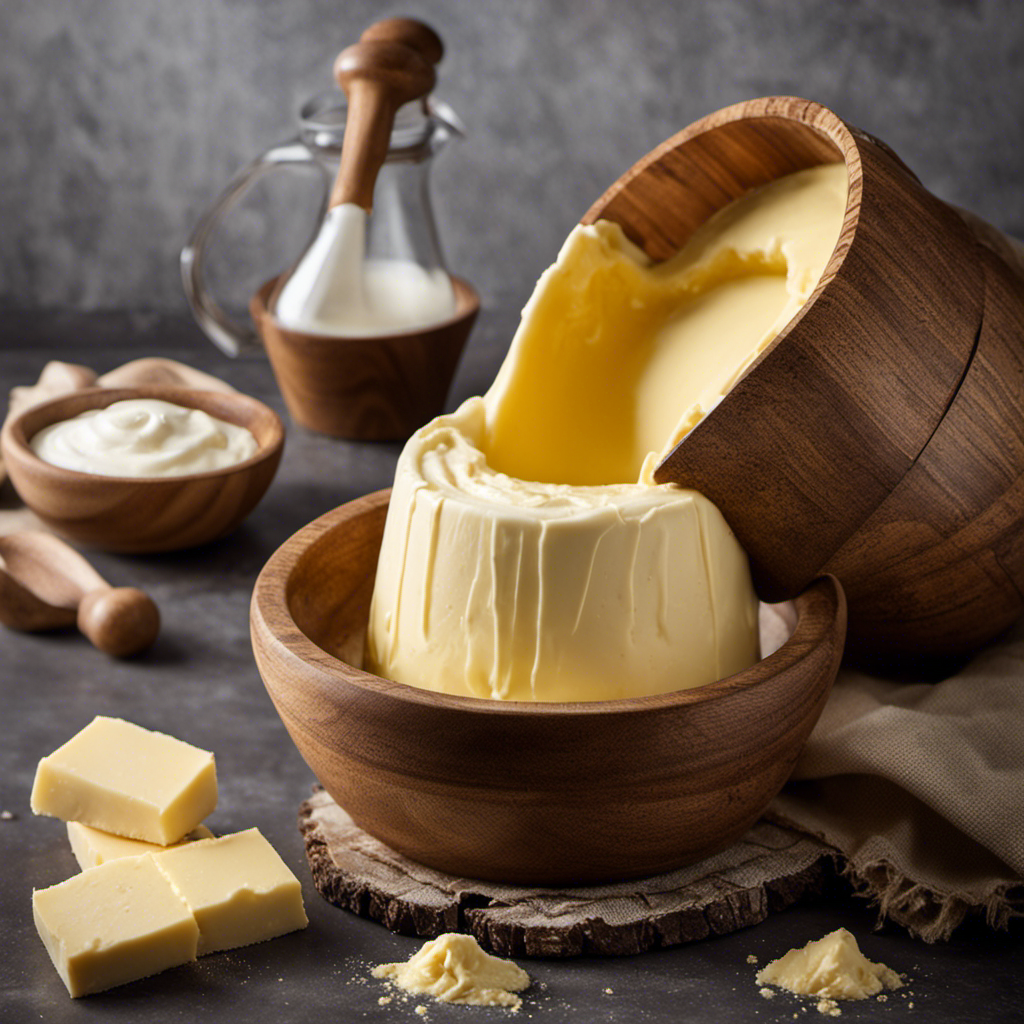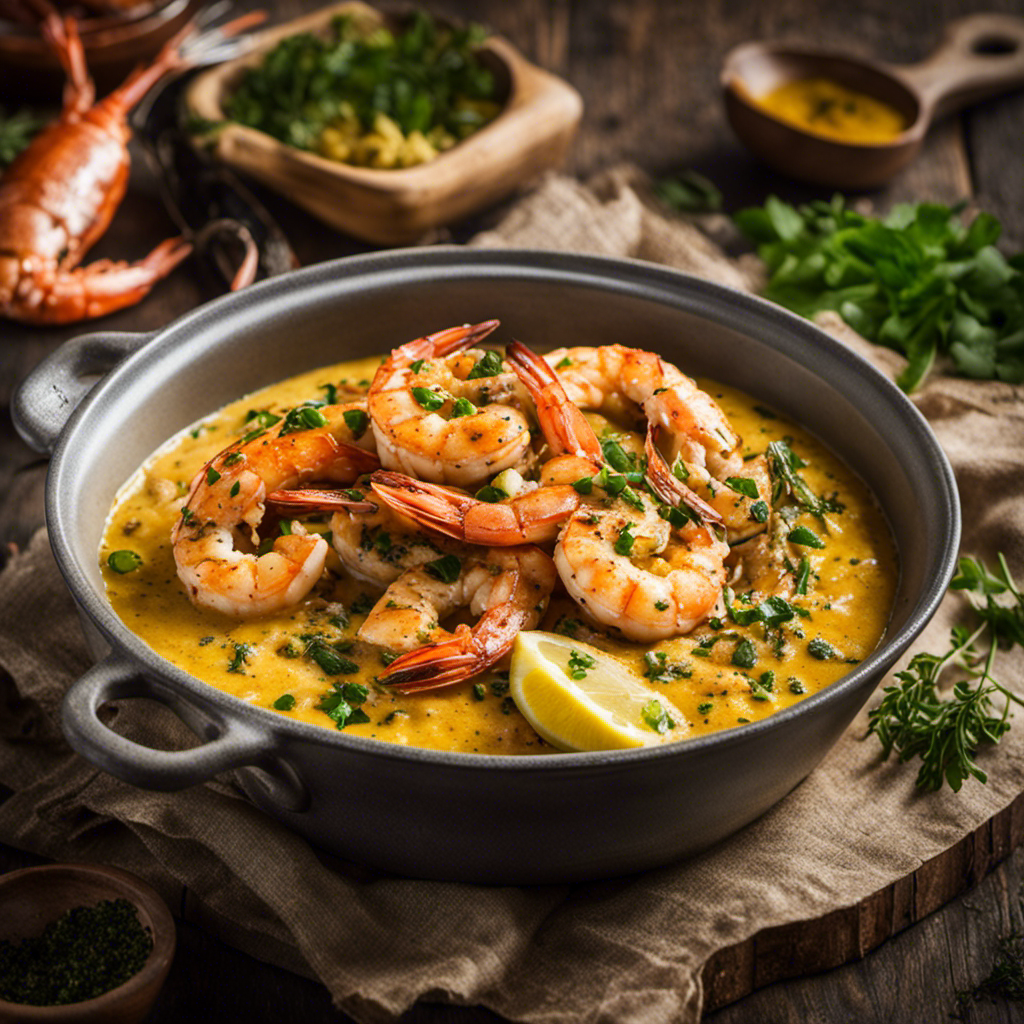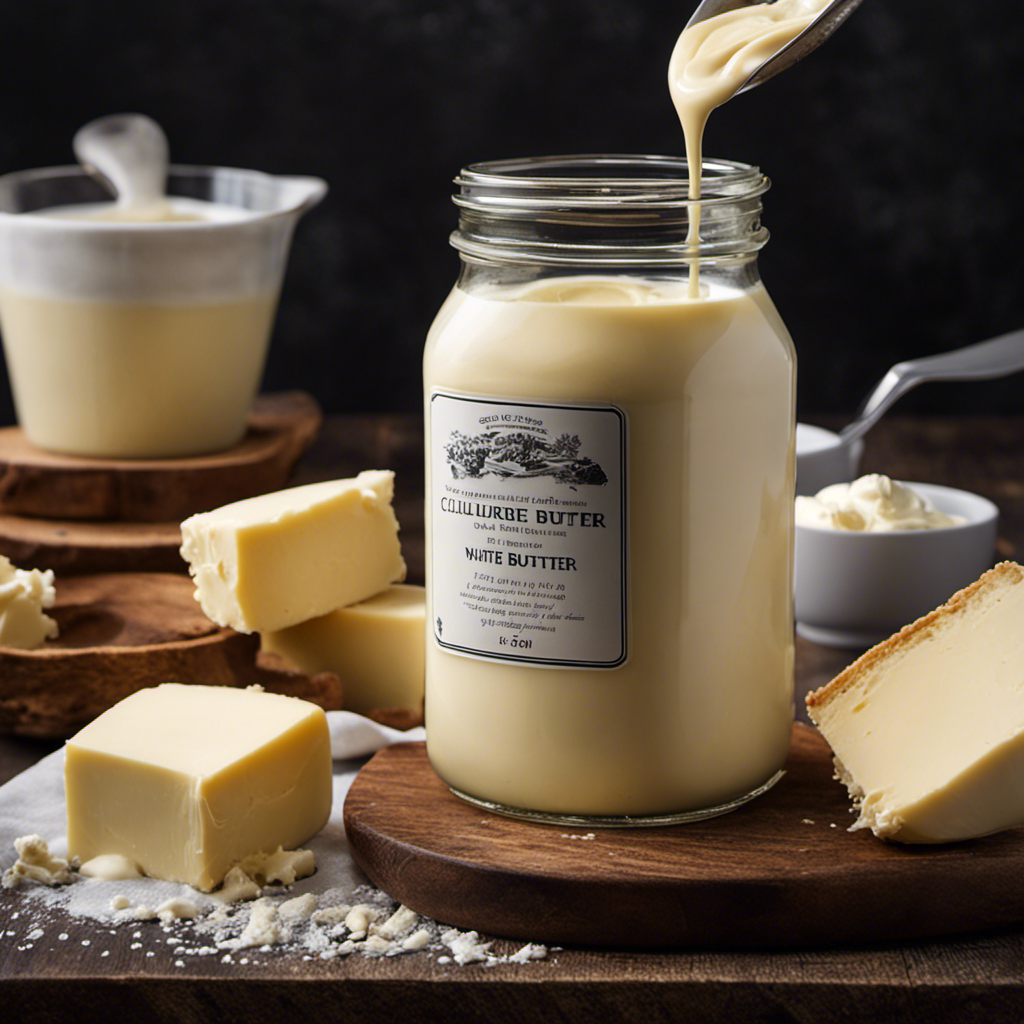Recipes & Culinary Uses
Create Delicious Garlic Butter Sauce for Seafood in 7 Steps
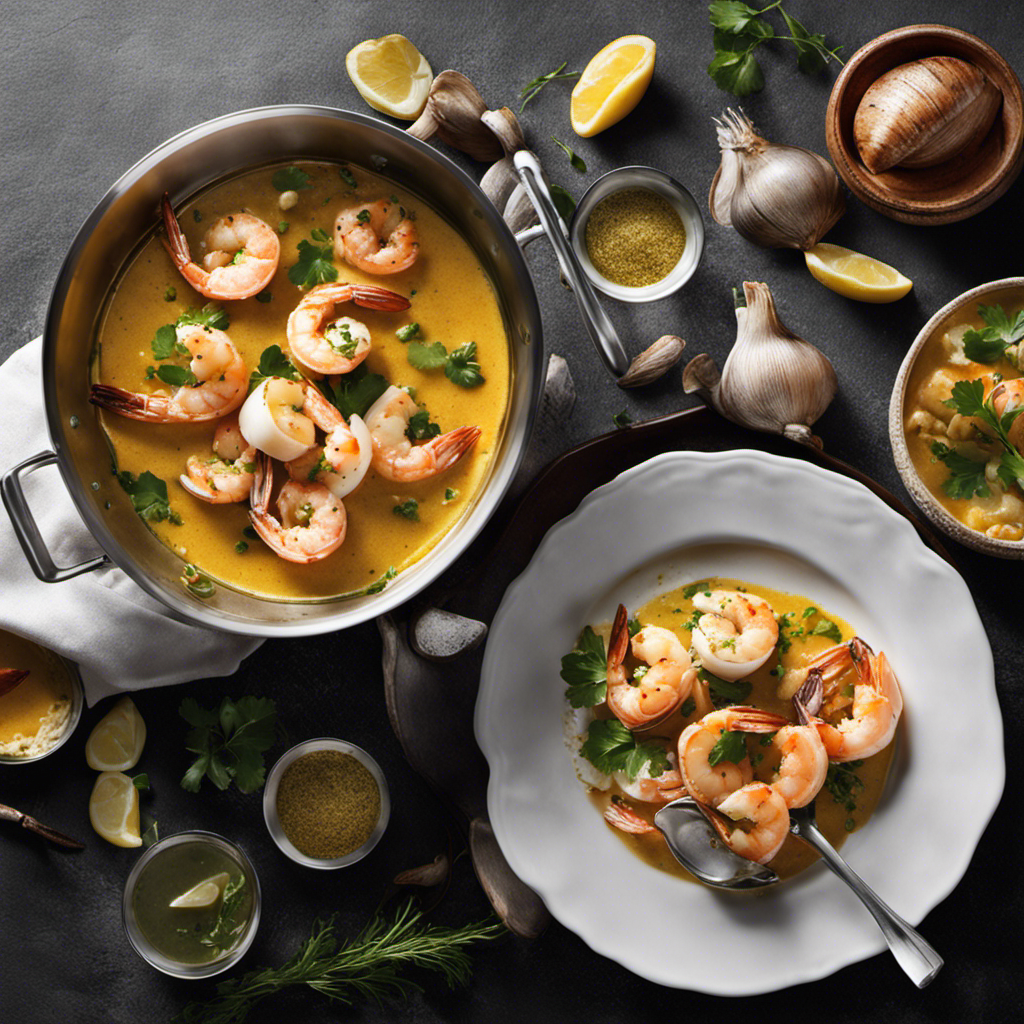
I know what you’re thinking – making garlic butter sauce for seafood sounds complicated, right? Well, let me tell you, it’s actually quite simple.
With just a few key ingredients and some easy steps, you can create a creamy, flavorful sauce that will take your seafood dishes to the next level.
So, if you’re ready to elevate your cooking game and impress your taste buds, let’s dive into the world of garlic butter sauce for seafood.
Key Takeaways
- Shrimp or lobster are preferred seafood choices for the sauce.
- Freshly minced garlic enhances the flavor of the sauce.
- Melted butter adds richness and flavor to the sauce.
- Experiment with different herb combinations to find your favorite.
Ingredients for Garlic Butter Sauce
The first step in making garlic butter sauce is gathering all the necessary ingredients.
When it comes to choosing seafood for this sauce, I prefer using shrimp or lobster as they complement the flavors of the garlic and butter perfectly.
For the garlic preparation, you’ll need about three cloves. Start by peeling the cloves and mincing them finely. This will release the aromatic oils and enhance the flavor of the sauce. Make sure to use fresh garlic for the best results.
The minced garlic will be sautéed in butter, creating a fragrant base for the sauce. The combination of the rich butter and the pungent garlic will give your seafood dish a burst of flavor that is both savory and indulgent.
Choosing the Right Seafood for the Sauce
When selecting seafood for the sauce, it’s important to consider the freshness and flavor of the fish or shellfish. The right choice of seafood can greatly enhance the taste and overall experience of the garlic butter sauce. Here are some key points to consider when choosing seafood varieties for the sauce:
-
Fish:
-
Whitefish: such as cod or halibut, are mild and flaky, making them perfect for absorbing the flavors of the sauce.
-
Salmon: with its rich and buttery texture, salmon pairs well with garlic butter sauce, adding a hint of richness.
-
Shellfish:
-
Shrimp: shrimp is a popular choice for garlic butter sauce due to its sweet and succulent taste.
-
Scallops: these tender and delicate shellfish are a great addition to the sauce, providing a slightly sweet and buttery flavor.
When cooking seafood for the sauce, it’s important to use appropriate cooking methods to maintain its freshness and texture. Grilling, sautéing, or broiling the seafood can help bring out its natural flavors while allowing it to retain its moisture. Remember to cook seafood just until it is opaque and flakes easily with a fork to avoid overcooking.
Preparing the Garlic for the Sauce
To prepare the garlic for the sauce, you’ll need to mince it finely before adding it to the other ingredients. Mincing garlic is a crucial step in creating a flavorful garlic butter sauce.
Start by peeling the garlic cloves and removing any green sprouts or blemishes. Then, using a sharp knife, chop the cloves into thin slices. Gather the slices together and finely chop them until you achieve a minced consistency. This will release the full flavor of the garlic, infusing the butter sauce with its aromatic essence.
Besides using garlic butter sauce for seafood, there are alternative uses for this versatile condiment. It can be used as a dipping sauce for bread, a topping for roasted vegetables, or even as a flavorful base for pasta dishes. The possibilities are endless with garlic butter sauce!
Melted Butter: The Key Ingredient
For the perfect melted butter, all you need to do is microwave it in short intervals until it reaches a smooth and liquid consistency. Melted butter is a key ingredient in many dishes, especially in sauce making. It adds richness and flavor, enhancing the overall taste of the dish.
However, if you’re looking for alternatives to melted butter, there are a few options to consider. Some alternatives to melted butter include:
- Olive oil: It provides a similar richness and can be used as a healthier alternative.
- Coconut oil: It adds a unique flavor to the dish and works well in desserts.
- Ghee: Clarified butter with a nutty flavor, commonly used in Indian cuisine.
The role of butter in sauce flavoring cannot be underestimated. It adds a creamy and velvety texture, while also imparting a rich and savory taste. Whether you choose traditional melted butter or opt for an alternative, the choice ultimately depends on the flavor profile you desire for your dish.
Cooking the Garlic in Butter
After cooking the garlic in melted butter, you’ll notice a fragrant aroma that adds depth and flavor to your dish. Cooking the garlic in butter is a crucial step in creating a delicious garlic butter sauce for seafood. The cooking technique allows the garlic to release its aromatic oils, infusing the butter with its distinct flavor. The variations in garlic butter sauce are endless, with each chef adding their own unique touch. From using different types of butter, such as salted or unsalted, to incorporating additional ingredients like lemon juice or white wine, the possibilities are endless. To give you an idea of the versatility of this sauce, here’s a table showcasing three popular variations:
| Variation | Ingredients |
|---|---|
| Classic | Garlic, butter, salt, pepper |
| Lemon | Garlic, butter, lemon juice, salt, pepper |
| Herb | Garlic, butter, fresh herbs (e.g., parsley, thyme, rosemary), salt, pepper |
Now that we’ve cooked the garlic in butter, let’s explore how adding herbs and spices can enhance the flavor even further.
Adding Herbs and Spices to Enhance Flavor
When it comes to enhancing the flavor of a dish, the right combination of herbs and spices can make all the difference.
In this discussion, I’ll be sharing some of the best herb combinations that can take your cooking to the next level.
Additionally, I’ll provide some useful tips on how to pair spices effectively to create a harmonious blend of flavors in your recipes.
Best Herb Combinations
To enhance the flavor of your garlic butter sauce for seafood, you can try mixing different herbs together. The right combination of herbs can elevate the taste of your sauce and make it truly exceptional. Here are some of the best herb combinations that you can use to add depth and complexity to your garlic butter sauce:
-
Classic Combination:
-
Parsley
-
Chives
-
Dill
-
Mediterranean Twist:
-
Basil
-
Oregano
-
Thyme
These herb combinations provide a balance of flavors that complement the richness of the garlic butter sauce. The fresh and aromatic notes from the herbs add a burst of freshness to the sauce, enhancing the overall taste of the seafood.
Experiment with different combinations to find your favorite flavor profile. Don’t be afraid to get creative and try new herbs to discover unique and delicious flavoring options for your garlic butter sauce.
Spice Pairing Tips
You can enhance the flavor of your dishes by learning some spice pairing tips. When it comes to creating delicious meals, using the right combination of spices can take your cooking to the next level.
One of the best spice pairing ideas is to match spices with similar flavor profiles. For example, cumin and coriander are a classic combination that adds depth and warmth to dishes like chili or curries.
Another tip is to experiment with contrasting flavors, such as pairing spicy chili powder with cooling mint. This creates a dynamic and well-balanced taste experience.
Don’t be afraid to get creative and try new combinations. By mastering spice pairing techniques, you’ll be able to elevate your cooking to new heights.
Speaking of elevating flavors, incorporating lemon juice for a tangy twist is another great way to enhance your dishes.
Incorporating Lemon Juice for a Tangy Twist
Adding lemon juice gives the garlic butter sauce a tangy twist. This simple addition not only enhances the flavor of the sauce but also brings a fresh and zesty element to your seafood dish.
The benefits of using lemon juice in your garlic butter sauce are numerous. Firstly, lemon juice is a great source of vitamin C, which boosts the immune system and promotes overall health. Secondly, it adds a natural acidity that balances the richness of the butter, creating a harmonious blend of flavors.
If you’re looking for alternative tangy ingredients, consider using lime juice or vinegar. These options can provide a similar tanginess to your garlic butter sauce and can be used as substitutes when lemon juice is not available. Experiment with these alternatives to find the perfect balance of tanginess for your seafood dish.
Thickening the Sauce for a Creamy Consistency
If you want a creamy consistency, try using a roux to thicken the sauce. A roux is a mixture of equal parts flour and fat, such as butter, that is cooked together to form a thick paste. By adding this to your garlic butter sauce, you’ll achieve a velvety texture that will coat your seafood perfectly.
There are other thickening techniques you can use as well. For example, you can add a small amount of cornstarch or arrowroot powder to the sauce and cook it until it thickens. Another option is to add a splash of heavy cream or a dollop of sour cream to the sauce, which will not only thicken it but also add a rich and creamy flavor.
Here’s a table that compares the different thickening techniques and their effects on the sauce:
| Thickening Technique | Effect on Sauce |
|---|---|
| Roux | Creamy and velvety texture |
| Cornstarch/Arrowroot | Smooth and glossy consistency |
| Heavy Cream/Sour Cream | Rich and creamy flavor |
Feel free to experiment with these techniques and find the one that suits your taste preferences. Additionally, you can also explore alternative sauce variations, such as adding grated Parmesan cheese for a cheesy twist or incorporating chopped herbs like parsley or dill for added freshness. The possibilities are endless when it comes to customizing your garlic butter sauce!
Seasoning the Sauce to Taste
To season the sauce to taste, simply sprinkle in some salt, pepper, and a pinch of paprika for a hint of smoky flavor. This step is crucial in elevating the taste of your garlic butter sauce for seafood. The right balance of seasonings can make all the difference in creating a delicious and well-rounded dish.
Here are a few seasoning techniques and tips to help you adjust the garlic flavor to your liking:
-
Experiment with different amounts of garlic: Start with a small amount and gradually add more if desired. Too much garlic can overpower the sauce, so it’s important to find the perfect balance.
-
Enhance the garlic flavor: If you want a stronger garlic taste, consider sautéing the garlic in butter before adding it to the sauce. This will release its aromatic oils and deepen the flavor.
-
Use garlic powder or roasted garlic: These alternatives provide a milder yet still flavorful garlic taste, allowing you to control the intensity of the sauce.
-
Incorporate herbs and spices: Adding herbs like parsley or chives, along with spices such as red pepper flakes or Italian seasoning, can complement and enhance the garlic flavor in your sauce.
Serving Suggestions for Garlic Butter Sauce
When serving your dish, don’t forget to offer a side of warm, crusty bread for dipping into the flavorful sauce.
The garlic butter sauce is rich and indulgent, and it pairs perfectly with seafood.
Another serving suggestion is to drizzle the sauce over grilled shrimp or lobster tails, enhancing their natural flavors.
For a twist, you can add a squeeze of lemon juice or a sprinkle of fresh herbs like parsley or chives to brighten up the dish.
If you want to make it spicy, try adding a pinch of red pepper flakes or a dash of hot sauce.
The versatility of this sauce allows you to experiment with different flavor variations to suit your taste preferences.
Whether you’re serving it with bread or seafood, this garlic butter sauce is sure to elevate your meal to a whole new level of deliciousness.
Storing and Reheating Garlic Butter Sauce
After enjoying a delicious meal with garlic butter sauce, you may find yourself with some leftovers that you want to store for later. Storing garlic butter sauce properly is essential to maintain its flavor and quality.
Here are some tips for storing and reheating your garlic butter sauce:
-
Storing:
-
Transfer the sauce to an airtight container or jar.
-
Place it in the refrigerator and use it within 3-4 days.
-
Alternatively, you can freeze the sauce for up to 3 months. Just make sure to thaw it in the refrigerator before using.
-
Reheating leftovers:
-
Gently heat the sauce in a saucepan over low heat.
-
Stir occasionally to prevent it from sticking or burning.
-
If the sauce separates, whisk it vigorously to bring it back together.
Frequently Asked Questions
How Can I Modify the Recipe to Make a Vegan Version of Garlic Butter Sauce?
To make a vegan version of garlic butter sauce, substitute the butter with a plant-based margarine or vegan butter. You can also use olive oil for a lighter option. This sauce is versatile and can be used in pasta dishes or as a dipping sauce for vegetables.
Can I Use Margarine Instead of Butter in the Sauce?
Yes, you can use margarine as a vegan substitute for butter in the sauce. While it may alter the taste slightly, it still provides a creamy texture and the health benefits of being plant-based.
Can I Use Pre-Minced Garlic Instead of Fresh Garlic Cloves?
Using minced garlic instead of fresh cloves in garlic butter sauce has pros and cons. Minced garlic is convenient and saves time, but it lacks the intense flavor of fresh cloves.
What Are Some Alternative Herbs and Spices That Can Be Added to the Sauce?
Alternative flavor combinations and unique seasoning options can elevate a garlic butter sauce for seafood. Adding herbs like basil or thyme, and spices like paprika or cayenne pepper, can create a delicious and customizable sauce.
How Long Can I Store the Garlic Butter Sauce in the Refrigerator?
I store garlic butter sauce in the refrigerator for up to a week. To extend its shelf life, make sure to properly seal the container and use clean utensils every time you scoop it out.
Conclusion
In conclusion, making garlic butter sauce for seafood is a simple and delicious way to enhance the flavors of your favorite dishes.
By combining melted butter with sautéed garlic, you create a rich and creamy sauce that pairs perfectly with a variety of seafood options.
Whether you prefer shrimp, lobster, or fish, this sauce will elevate your meal to new heights.
Remember the old adage, ‘The secret ingredient is always love,’ and show your love for seafood by trying out this mouthwatering sauce.
Enjoy!
Diana’s meticulous nature and editorial prowess set the gold standard for our content. With over a decade in the culinary and publishing industries, her guidance ensures that every article perfectly blends information and entertainment. A culinary experimenter, Diana loves whipping up new butter-based concoctions in her kitchen.
Recipes & Culinary Uses
How Many Sticks of Butter in 8 Oz: A Quick Guide
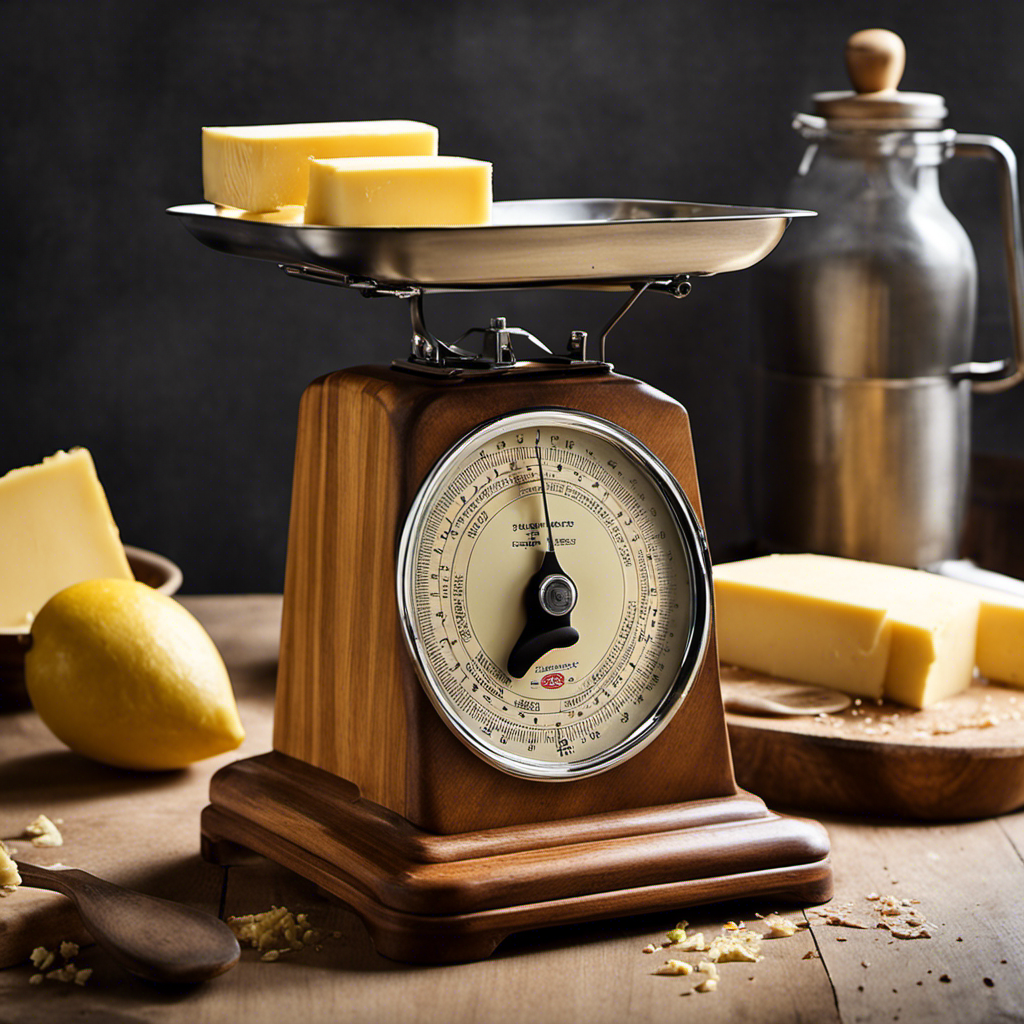
I’ve always been particular about accurate measurements when it comes to baking. Therefore, when I started questioning, ‘How many sticks is 8 oz of butter?’ I decided to do some research to get the answer.
As it turns out, understanding the measurement conversion from ounces to sticks is key. In this article, I’ll break down the standard stick of butter size, explain how to convert ounces to sticks, and provide tips for accurately measuring butter.
Let’s get calculating!
Key Takeaways
- One stick of butter is equal to 8 tablespoons or 1/2 cup.
- Converting ounces to sticks, one stick of butter is equal to 4 ounces.
- Butter is commonly sold in 4-ounce sticks.
- Accurate measurement is crucial for successful culinary endeavors.
Understanding the Measurement Conversion
To understand the measurement conversion, you’ll need to know how many sticks are in 8 oz of butter. Common mistakes when measuring butter can lead to inaccurate results in recipes. One mistake is using the wrong measurement unit. Many recipes call for butter to be measured in sticks, but some people mistakenly measure it in cups or ounces instead. This can throw off the balance of ingredients and affect the final outcome of the dish.
Converting butter measurements for different recipes can be a bit tricky. It’s important to know that one stick of butter is equal to 8 tablespoons or 1/2 cup. So, if a recipe calls for 8 oz of butter, you would need two sticks. Understanding these conversions will ensure accurate measurements and successful cooking.
Now, let’s dive into the standard stick of butter size.
The Standard Stick of Butter Size
The standard stick of butter size is typically 8 ounces. This size has become a common reference point for many home cooks and bakers. However, it is important to note that butter packaging can vary depending on the country and brand.
Here are some variations in butter packaging:
- In the United States, butter is often sold in 4-ounce sticks, which means that 8 ounces would be equivalent to two sticks.
- In Europe, butter is commonly packaged in 250-gram blocks, which is approximately 8.8 ounces.
- Some brands also offer butter in tubs or tubular containers, which may not follow the standard stick size.
The historical origins of the stick of butter size are not well-documented. However, it is believed that the stick size was introduced in the early 20th century to make it easier for consumers to measure and use butter in recipes.
Converting Ounces to Sticks
Converting ounces to sticks can be a helpful way to measure butter for your recipes. Butter is commonly sold in sticks, which are a convenient and easy-to-use measurement for baking.
To convert ounces to sticks, you need to know that one stick of butter is equal to 4 ounces. Therefore, if you have 8 ounces of butter, you would have 2 sticks. This conversion is based on the standard packaging of butter, which typically comes in 4-ounce sticks.
The history of butter packaging has had a significant impact on measurement standards. In the past, butter was often sold in bulk or wrapped in different sizes, making it difficult to measure accurately. The introduction of standardized butter packaging has made it easier for bakers to follow recipes precisely and achieve consistent results.
Calculating the Number of Sticks in 8 Oz of Butter
Calculating how many sticks are in 8 ounces of butter is a straightforward process. To help you understand this calculation, here are a few key points:
-
Converting grams to sticks: If you have a recipe that calls for grams of butter and you want to measure it in sticks, you can use a conversion chart. Simply find the number of grams in your butter, then refer to the chart to determine how many sticks it is equivalent to.
-
Alternative measurements for butter: Besides sticks and ounces, butter can also be measured in tablespoons, cups, or grams. It’s important to know these alternative measurements, especially if you don’t have a stick of butter on hand.
-
Tips for measuring butter accurately: Measuring butter can sometimes be a bit tricky, as it’s often sold in blocks or tubs. To ensure accuracy, use a kitchen scale to weigh the desired amount or refer to the measurement markings on the packaging.
Understanding these concepts will not only help you calculate the number of sticks in 8 ounces of butter, but also provide you with the knowledge to measure butter accurately in various situations.
Now, let’s delve into some tips for measuring butter accurately.
Tips for Measuring Butter Accurately
Measuring butter accurately can be made easier by using a kitchen scale or referring to the measurement markings on the packaging.
When it comes to measuring butter alternatives, a kitchen scale is a valuable tool. It allows for precise measurements in grams or ounces, ensuring accuracy in recipes. By placing a bowl on the scale, zeroing it, and then adding the desired amount of butter alternative, one can easily measure the exact quantity needed. This method eliminates the guesswork and guarantees consistent results.
Alternatively, some butter alternatives come in pre-measured sticks or cups, which have measurement markings on the packaging. These markings indicate the amount of butter alternative contained in each stick or cup, making it effortless to measure the required quantity.
Whether using a kitchen scale or relying on the measurement markings, accurately measuring butter alternatives is crucial for successful culinary endeavors.
Frequently Asked Questions
Can I Use a Different Size Stick of Butter for This Measurement Conversion?
Yes, you can use a different size stick of butter for this measurement conversion. However, it is important to note that using different stick sizes may affect the accuracy of the butter measurement.
How Do I Convert Ounces to Grams?
How do I convert ounces to grams? Converting ounces to milliliters is a straightforward process, but converting grams to pounds requires a different formula. Let’s explore the steps and calculations involved in each conversion.
What Other Ingredients Can I Use as a Substitute for Butter in This Recipe?
When looking for substitutes for butter in a recipe, there are several vegan butter alternatives available. These options can be used as a replacement for butter to create a similar texture and taste in your dish.
Can I Use Salted Butter Instead of Unsalted Butter for This Measurement?
Using salted butter instead of unsalted butter can alter the taste and saltiness of the dish. To determine the right amount of salt, consider the salt content in the recipe and adjust accordingly.
How Do I Measure Butter Without Using a Scale or Measuring Cup?
To measure butter without a scale or measuring cup, you can use the markings on the butter wrapper or a kitchen scale. Adjusting the amount of butter in a recipe depends on personal preference or dietary restrictions.
Conclusion
In conclusion, understanding the measurement conversion of butter is essential for accurate baking and cooking.
Converting ounces to sticks can be easily done by knowing the standard stick size. Based on my research, one interesting statistic is that a standard stick of butter weighs 4 ounces.
Therefore, to calculate the number of sticks in 8 ounces of butter, one would divide 8 by 4, resulting in 2 sticks.
This statistic highlights the importance of precise measurements to achieve desired culinary results.
Diana’s meticulous nature and editorial prowess set the gold standard for our content. With over a decade in the culinary and publishing industries, her guidance ensures that every article perfectly blends information and entertainment. A culinary experimenter, Diana loves whipping up new butter-based concoctions in her kitchen.
Recipes & Culinary Uses
How Many Sticks of Butter Equal a Pound: A Simple Guide

As a baker who bakes at home, I frequently ponder the question of how many sticks of butter make up a pound. This information is essential when following recipes and aiming for the desired texture and flavor.
In this article, we’ll explore the conversion ratio of sticks of butter to pounds, delve into the world of butter packaging and measurements, and provide you with common conversions for baking.
So, let’s dive in and uncover the secrets of accurate butter measurement!
Key Takeaways
- The common conversion ratio is 4 sticks of butter to 1 pound.
- 1 pound of butter is equivalent to 4 sticks.
- 2 sticks of butter is half a pound.
- 1 cup of butter is equal to 2 sticks or 16 tablespoons.
Conversion Ratio: Sticks of Butter to Pounds
There’s a common conversion ratio of 4 sticks of butter to 1 pound. This ratio is widely used in cooking and baking. It helps to know this conversion when following recipes that call for butter in pounds or sticks.
For example, if a recipe requires 1 pound of butter, you can easily determine that it is equivalent to 4 sticks. Similarly, if a recipe calls for 2 sticks of butter, you can calculate that it is half a pound.
It’s important to note that butter should be stored properly to maintain its freshness. To keep butter at its best, store it in the refrigerator in an airtight container. You can also freeze butter for longer storage, but make sure to wrap it tightly in foil or freezer-safe bags to prevent freezer burn.
Butter Packaging and Measurements
To figure out how much butter is in a pound, you’ll need to know how the packaging and measurements are done. Butter packaging design and the types of butter sold can vary, but here are some common factors to consider:
- Butter is typically sold in sticks, which are usually wrapped in wax paper or foil.
- Each stick of butter is usually 1/2 cup or 8 tablespoons.
- Butter can also be sold in blocks or tubs, which may have different measurements indicated on the packaging.
- European butter is often sold in 250g blocks, which is slightly less than 1/2 pound.
- Some butter packaging may also include weight measurements in grams.
Understanding the different packaging options and measurements is important when converting butter for recipes.
Now, let’s explore some common butter conversions for baking.
Common Butter Conversions for Baking
If you’re looking to convert butter for baking, a common measurement is 1 cup of butter, which is equal to 2 sticks or 16 tablespoons.
When it comes to butter measurement tips, it’s important to know these conversions to ensure accurate results in your recipes. Converting butter measurements can be crucial in achieving the right texture and flavor in your baked goods.
Understanding the equivalencies can save you time and effort in the kitchen. For example, if a recipe calls for 1/2 cup of butter, you can simply use 1 stick of butter. Similarly, if you need 1/4 cup of butter, you can use half a stick or 4 tablespoons.
Knowing these conversions will help you navigate through various baking recipes with ease and confidence.
How to Convert Sticks of Butter to Pounds
Converting sticks of butter to pounds can be done by multiplying the number of sticks by 0.25. This is a simple and quick calculation that allows you to easily convert butter measurements. However, it’s important to note that different butter types may have slight variations in weight.
To accurately measure butter, you can use the following tools:
- Kitchen scale: This is the most precise way to measure butter, as it gives you an exact weight.
- Measuring cups: Use a liquid measuring cup for softer butters, and a dry measuring cup for harder butters.
- Butter dish: Some butter dishes have markings on the side, indicating the weight of the butter.
Tips for Accurate Butter Measurement
For more precise measurements, you can try using a kitchen scale to accurately measure the weight of your butter. This is especially helpful when you need to soften a specific amount of butter for baking or cooking.
Softening butter is crucial for achieving the right texture and consistency in your recipes. If you don’t have a kitchen scale, there are alternative measurements you can use.
One stick of butter typically weighs around 113 grams or 4 ounces. So, if you need half a cup of butter, you can use one stick, and if you need one cup of butter, you can use two sticks.
Remember to let the butter sit at room temperature for about 30 minutes before using it. This will make it easier to work with and ensure even mixing in your recipes.
Frequently Asked Questions
Can I Use Margarine Instead of Butter in Baking Recipes?
Yes, you can use margarine instead of butter in baking recipes. However, keep in mind that margarine may have a different texture when baked compared to butter. Experimentation may be needed to achieve desired results.
How Many Tablespoons Are in a Stick of Butter?
There are 8 tablespoons in a stick of butter. Knowing this conversion is helpful when substituting butter in recipes or when following a recipe that calls for a specific amount of butter in tablespoons.
Is It Possible to Convert Grams of Butter to Pounds?
Converting grams of butter to pounds is possible. However, there is no standard conversion rate for butter from grams to pounds. It depends on the density of the butter.
What Is the Shelf Life of a Stick of Butter?
The shelf life of a stick of butter depends on proper storage. It can last for several weeks in the refrigerator and up to a year in the freezer.
Are There Any Alternative Measurements for Butter Besides Sticks and Pounds?
When it comes to butter, there are alternative measurements besides sticks and pounds. Butter conversion charts can help you determine the right amount for your recipe. It’s important to have accurate measurements for baking.
Conclusion
Given the conversion ratio of 1 pound of butter equaling 4 sticks, it is clear that butter packaging and measurements can be confusing. However, with common conversions for baking and a simple method to convert sticks of butter to pounds, achieving accurate measurements is possible.
While it may seem trivial, accurately measuring butter can make a significant difference in the outcome of your baked goods. So, next time you reach for that stick of butter, remember the importance of precision and embrace the irony of this seemingly small task.
Sunny’s articles radiate enthusiasm, much like her sunny disposition. As our resident “Butter Geek”, she delves deep into the latest butter trends, ensuring our readers are always in the know. Beyond her writing, Sunny’s passion lies in exploring vegan butter alternatives and hosting butter-tasting soirées.
Recipes & Culinary Uses
How Many Ounces in a Cup of Butter: A Simple Guide

Ever thought about how many ounces are in one cup of butter?
Well, I’ve got the answer for you! In this article, I will explain the conversion of butter measurements and help you understand the relationship between cups and ounces when it comes to measuring butter.
With this information, you’ll be able to confidently convert cups to ounces for any butter recipe.
So let’s dive in and demystify the world of butter measurements!
Key Takeaways
- Accurate conversion equivalents are crucial in cooking and baking.
- Understanding the relationship between cups and ounces in butter is essential for successful recipes.
- Butter measurements can vary depending on temperature and type, so it’s important to double-check measurements.
- Conversion charts and knowledge of measurement equivalents help ensure accuracy when measuring butter.
Conversion of Butter Measurements
I know that there are 8 ounces in a cup of butter. When it comes to measuring butter, it’s important to have accurate conversion equivalents. Converting butter measurements accurately can be crucial in cooking and baking. Understanding the butter measurement equivalents can save you from any recipe mishaps.
For example, if a recipe calls for 1/2 cup of butter, it means you need 4 ounces of butter. Similarly, if a recipe requires 1/4 cup of butter, you’ll need 2 ounces. It’s essential to have this knowledge to ensure your recipes turn out as intended.
Understanding Ounces in a Cup of Butter
It’s important to understand the measurement of ounces when using butter in recipes. Butter is often measured in ounces, and it’s crucial to know how to convert these measurements accurately.
A cup of butter is equal to 8 ounces or 2 sticks of butter. This measurement is essential because it determines the correct amount of butter needed for a recipe.
To convert butter measurements, remember that 1 stick of butter is equal to 4 ounces or 1/2 cup. So if a recipe calls for 1 cup of butter, you’d need 2 sticks or 8 ounces.
Understanding butter measurements and being able to convert them accurately will help ensure the success of your recipes and delicious results in the kitchen.
The Relationship Between Cups and Ounces in Butter
To accurately measure butter in recipes, it’s important to understand the relationship between cups and ounces. Here are some important tips to help you convert butter measurements:
- 1 cup of butter is equal to 8 ounces or 2 sticks of butter.
- If a recipe calls for 1/2 cup of butter, you’ll need 4 ounces or 1 stick of butter.
- For 1/4 cup of butter, you’ll need 2 ounces or 1/2 stick of butter.
Knowing these butter measurement equivalents will ensure accuracy in your recipes.
When measuring butter in cups and ounces, it’s important to remember that butter can vary in density depending on its temperature. Softened butter will take up more space in a measuring cup compared to cold butter. So, if a recipe calls for melted butter, it’s best to measure it in its melted state rather than trying to convert it from solid form.
Now that we understand the relationship between cups and ounces, let’s dive into the details of measuring butter in cups and ounces.
Measuring Butter in Cups and Ounces
When measuring butter in recipes, I find it helpful to understand the conversion between cups and ounces. This knowledge ensures that I add the right amount of butter to my dishes, resulting in a well-balanced and delicious outcome.
To measure butter accurately, I often refer to a conversion chart that tells me how many ounces are in a cup. Typically, there are 8 ounces in a cup of butter. However, it’s important to note that butter can also be measured in teaspoons and tablespoons.
For instance, one stick of butter is equal to 8 tablespoons or 1/2 cup. Knowing these conversions is crucial for achieving the desired taste and consistency in my recipes.
Accurate butter measurements truly make a difference in the final outcome of any dish.
Converting Cups to Ounces for Butter Measurement
I find it helpful to understand the conversion between cups and ounces for measuring butter in recipes and ensuring accurate measurements.
When converting butter measurements from cups to ounces, it’s important to remember that different types of butter have different densities, which can affect the conversion factor. However, as a general guideline, here is a rough conversion:
- 1 cup of butter is approximately equal to 8 ounces.
- 1 stick of butter is equal to 1/2 cup, which is approximately 4 ounces.
- 1 tablespoon of butter is equal to 1/8 cup, which is approximately 1 ounce.
Keep in mind that these conversions are approximate and may vary slightly depending on the brand and type of butter you’re using. It’s always a good idea to double-check your measurements to ensure accuracy in your recipes.
Frequently Asked Questions
Can I Use Margarine Instead of Butter in Recipes That Call for Cups and Ounces of Butter?
Yes, you can use margarine instead of butter in recipes that call for cups and ounces of butter. Margarine is a common alternative option for measuring butter in baking.
How Do I Convert Tablespoons to Ounces When Measuring Butter?
Converting tablespoons to ounces when measuring butter can be a bit tricky. But fear not! I’ve got the butter measurement equivalents down to a science. Let me break it down for you.
What Is the Difference Between Salted and Unsalted Butter When Measuring Cups and Ounces?
The difference between salted and unsalted butter when measuring cups and ounces is that salted butter already contains salt, while unsalted butter does not. Margarine can be used as a substitute for butter, but it may have different texture and taste.
Can I Use a Kitchen Scale to Measure Butter Instead of Using Cups and Ounces?
Using a scale to measure ingredients in baking has many benefits. It allows for precise measurements, ensuring accurate results. Plus, it’s a time-saver and reduces the need for multiple measuring cups.
Are There Any Tips or Tricks for Accurately Measuring Butter in Cups and Ounces Without a Scale?
When measuring butter without a scale, there are a few tips for accurate measurement. One cup of butter is equal to 8 ounces. Remember to soften the butter before measuring for more precise results.
Conclusion
In conclusion, knowing how to convert butter measurements is crucial in cooking and baking. Remember the adage ‘A cup of butter, 8 ounces it shall be.’
By understanding the relationship between cups and ounces, you can accurately measure butter for your recipes. Whether you need to convert cups to ounces or vice versa, knowing the precise measurements will ensure your dishes turn out perfectly every time.
So next time you’re in the kitchen, don’t forget to measure your butter with precision.
From sneaky childhood butter licks to penning some of our most popular articles, Jamie’s journey with butter has been lifelong. His culinary background gives him a unique perspective, allowing him to craft mouthwatering articles that educate and tantalize equally. Jamie’s travel adventures revolve around finding the world’s best buttery treats when he isn’t writing.
-
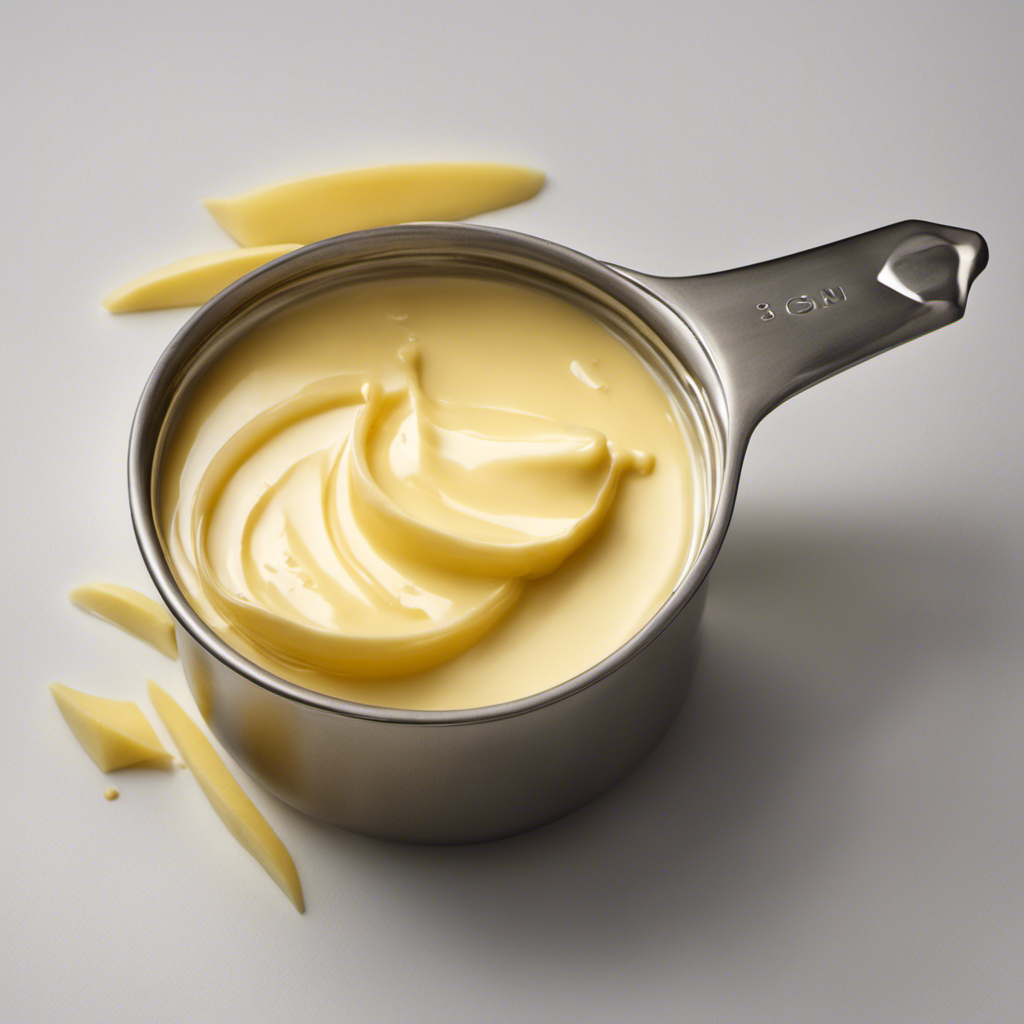
 Butter Tips and Tricks1 month ago
Butter Tips and Tricks1 month agoHow Many Tablespoons in 2/3 Cup of Butter?
-
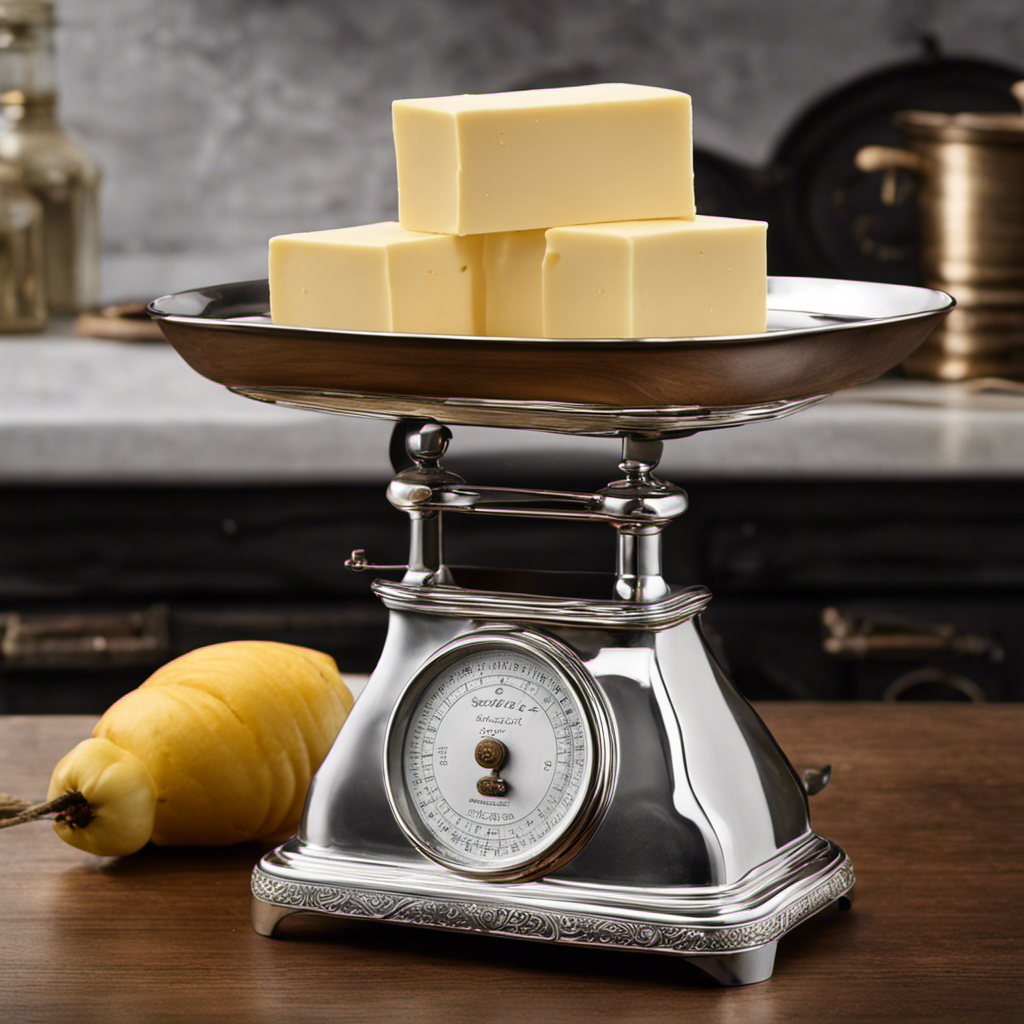
 Butter Tips and Tricks1 month ago
Butter Tips and Tricks1 month agoConverting 3/4 Cup of Butter to Sticks: How Many Sticks?
-
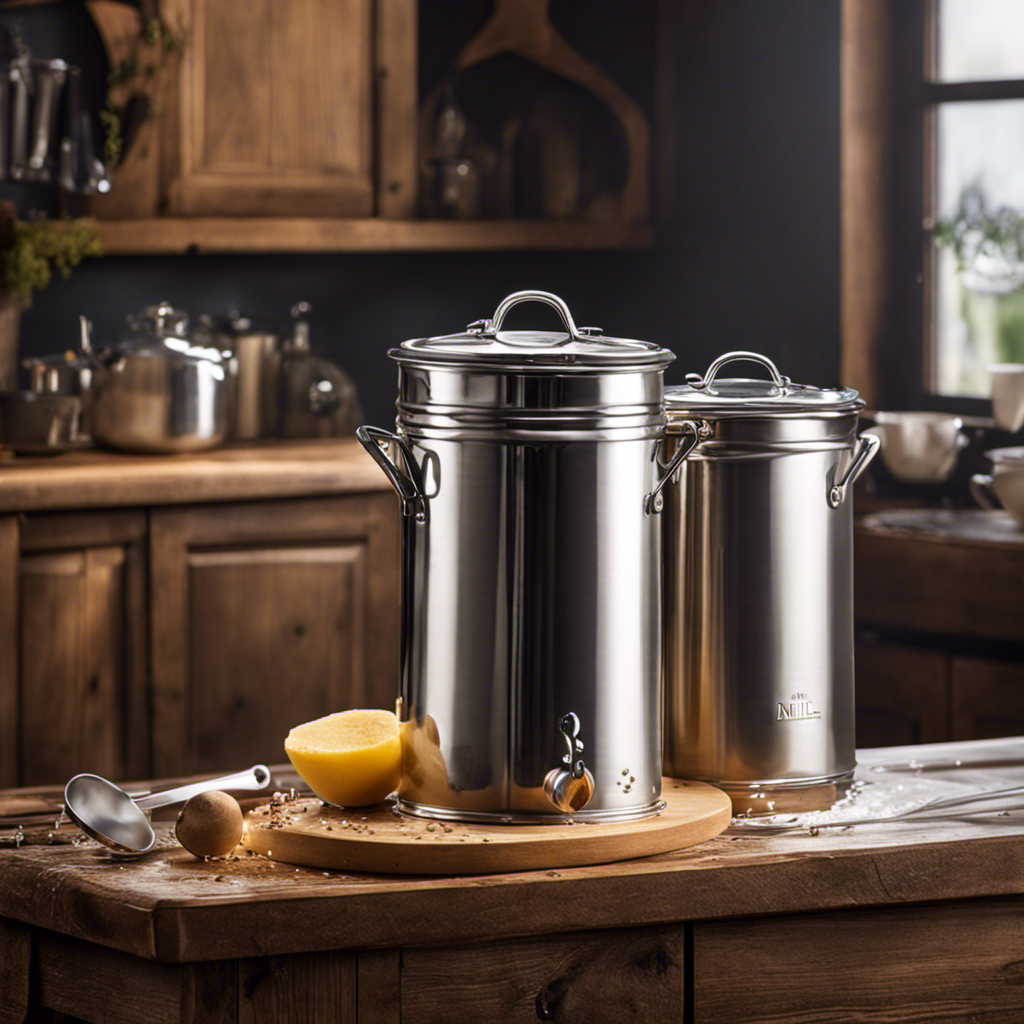
 Recipes & Culinary Uses3 months ago
Recipes & Culinary Uses3 months agoHomemade Butter Making at Home with Fresh Milk
-
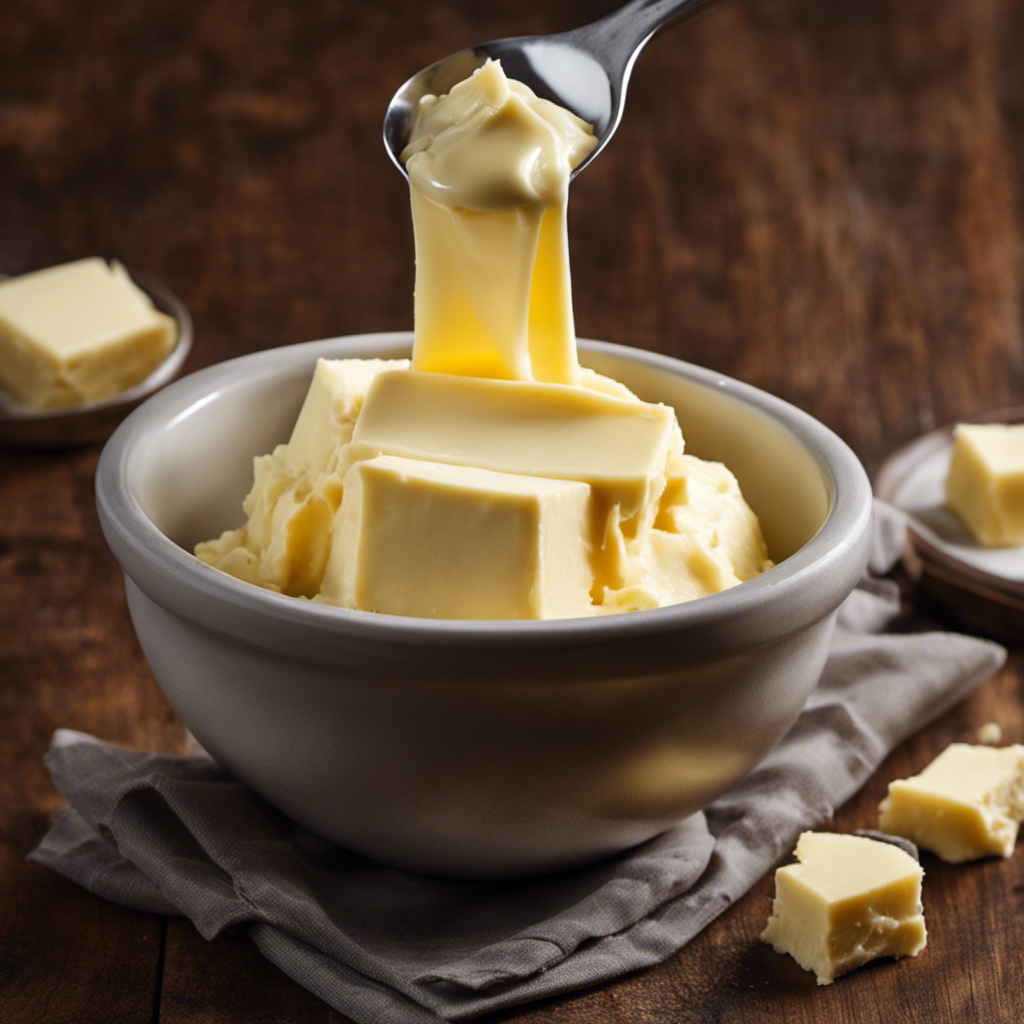
 Butter Tips and Tricks4 weeks ago
Butter Tips and Tricks4 weeks agoHow Many Tablespoons of Butter Are in 3/4 Cup?
-

 Recipes & Culinary Uses3 months ago
Recipes & Culinary Uses3 months ago10 Steps to Cook Delicious Dried Butter Beans
-
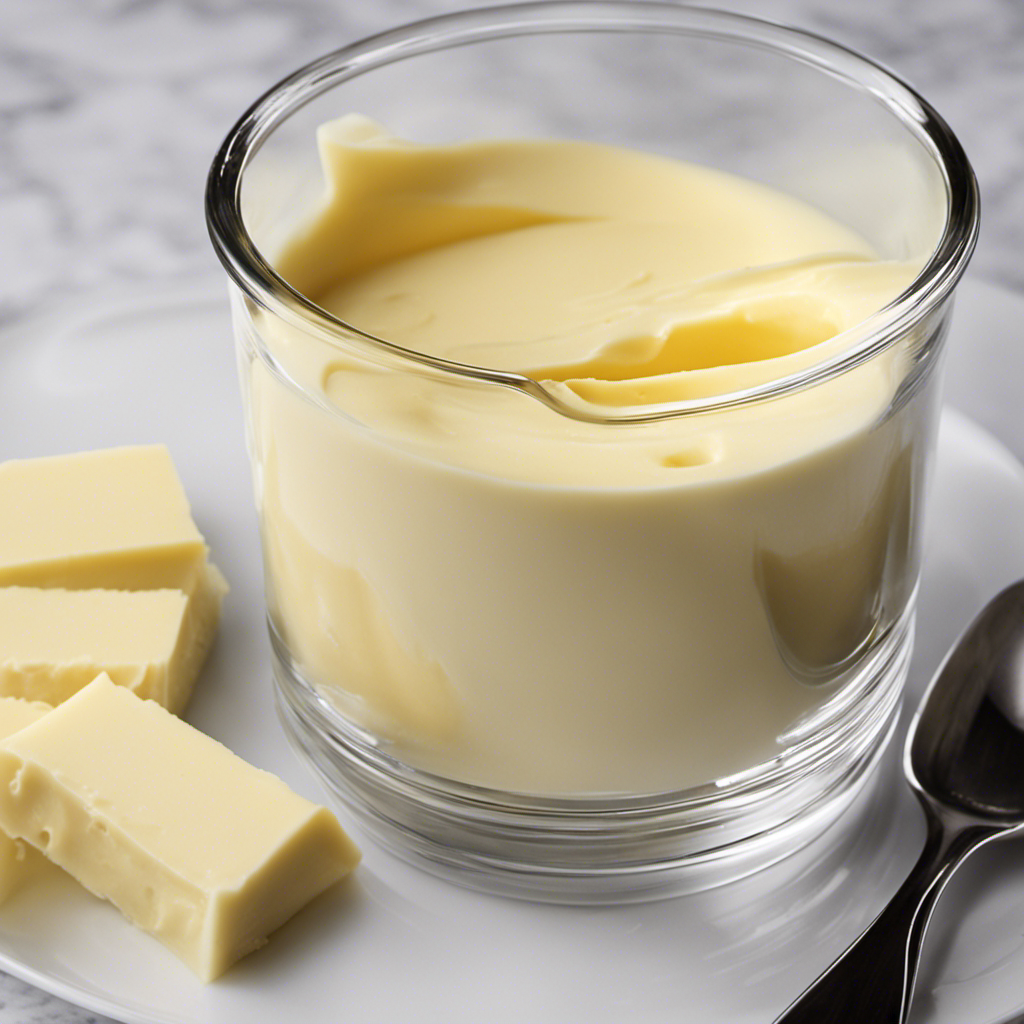
 Recipes & Culinary Uses3 months ago
Recipes & Culinary Uses3 months agoHow Many Tablespoons of Butter in 3/4 Cup: A Simple Guide
-
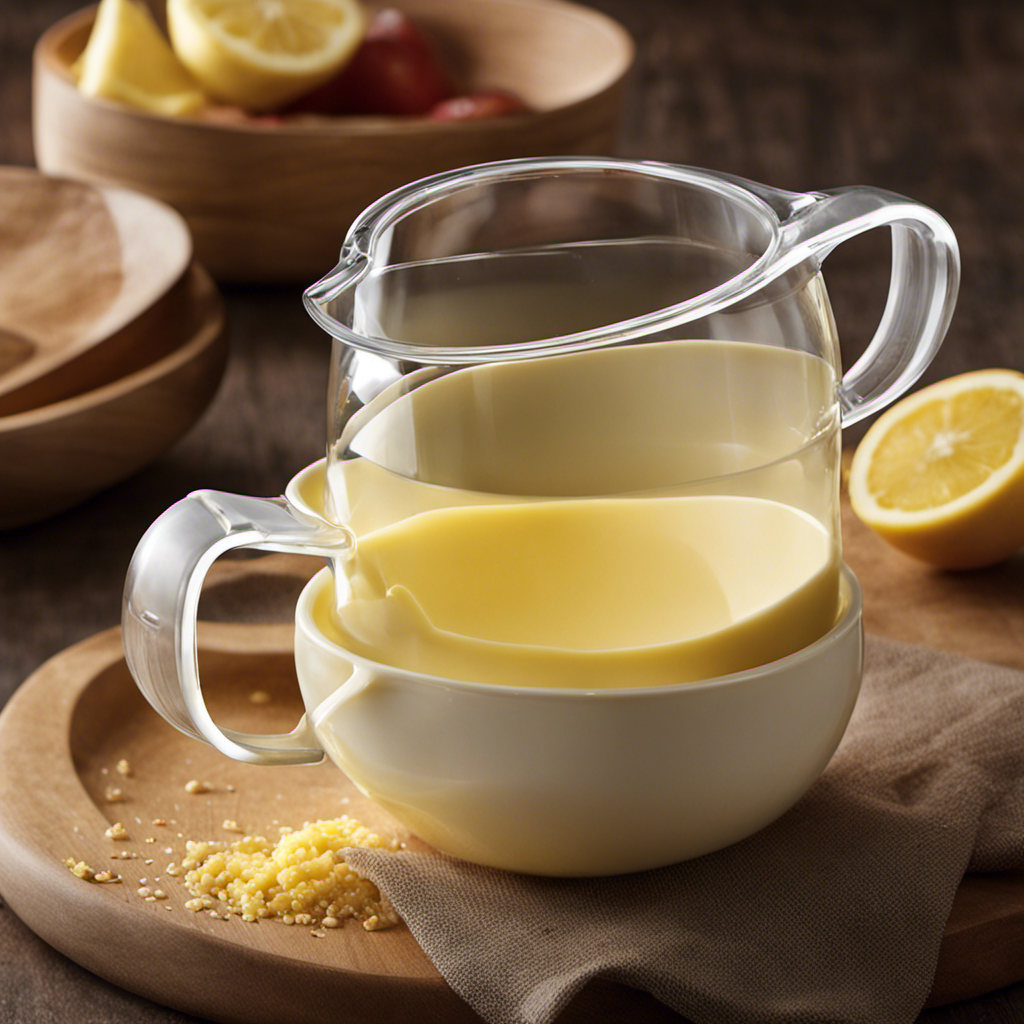
 Butter Tips and Tricks1 month ago
Butter Tips and Tricks1 month agoHow Many Tablespoons of Butter in 1/3 Cup: A Simple Guide
-

 Butter Tips and Tricks4 weeks ago
Butter Tips and Tricks4 weeks agoHow Many Tablespoons of Butter in 1/4 Cup: A Simple Guide








